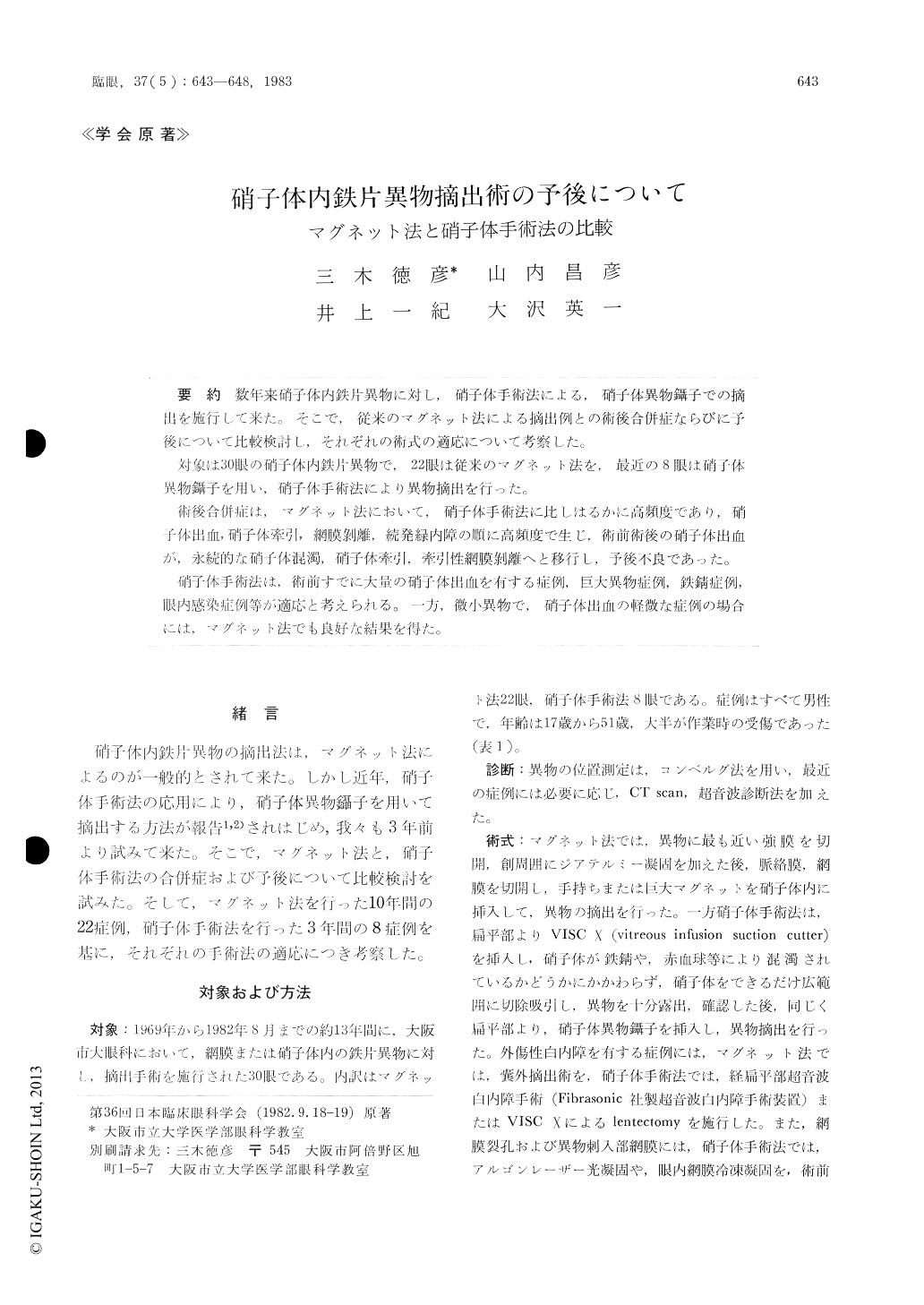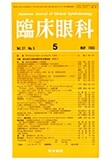Japanese
English
- 有料閲覧
- Abstract 文献概要
- 1ページ目 Look Inside
数年来硝子体内鉄片異物に対し,硝子体手術法による,硝子体異物鑷子での摘出を施行して来た。そこで,従来のマグネット法による摘出例との術後合併症ならびに予後について比較検討し,それぞれの術式の適応について考察した。
対象は30眼の硝子体内鉄片異物で,22眼は従来のマグネット法を,最近の8眼は硝子体異物鑷子を用い,硝子体手術法により異物摘出を行った。
術後合併症は,マグネット法において,硝子体手術法に比しはるかに高頻度であり,硝子体出血硝子体牽引,網膜剥離,続発緑内障の順に高頻度で生じ,術前術後の硝子体出血が,永続的な硝子体混濁,硝子体牽引,牽引性網膜剥離へと移行し,予後不良であった。
硝子体手術法は,術前すでに大量の硝子体出血を有する症例,巨大異物症例,鉄錆症例,眼内感染症例等が適応と考えられる。一方,微小異物で,硝子体出血の軽微な症例の場合には,マグネット法でも良好な結果を得た。
The prognosis for intraocular iron foreign bodies was often poor even if it was removed surgicallyby the magnet method because of toxicity to the retina by iron and traumatic vitreous hemorrhage caused by the foreign body.
For the past two years, we have been removing intraocular foreign bodies with special forceps designed for this purpose when used in conjunction with pars plana vitrectomy.
In this paper the prognoses and complications of foreign body removal by the conventional magnet method and by vitreous surgery arc discussed.

Copyright © 1983, Igaku-Shoin Ltd. All rights reserved.


